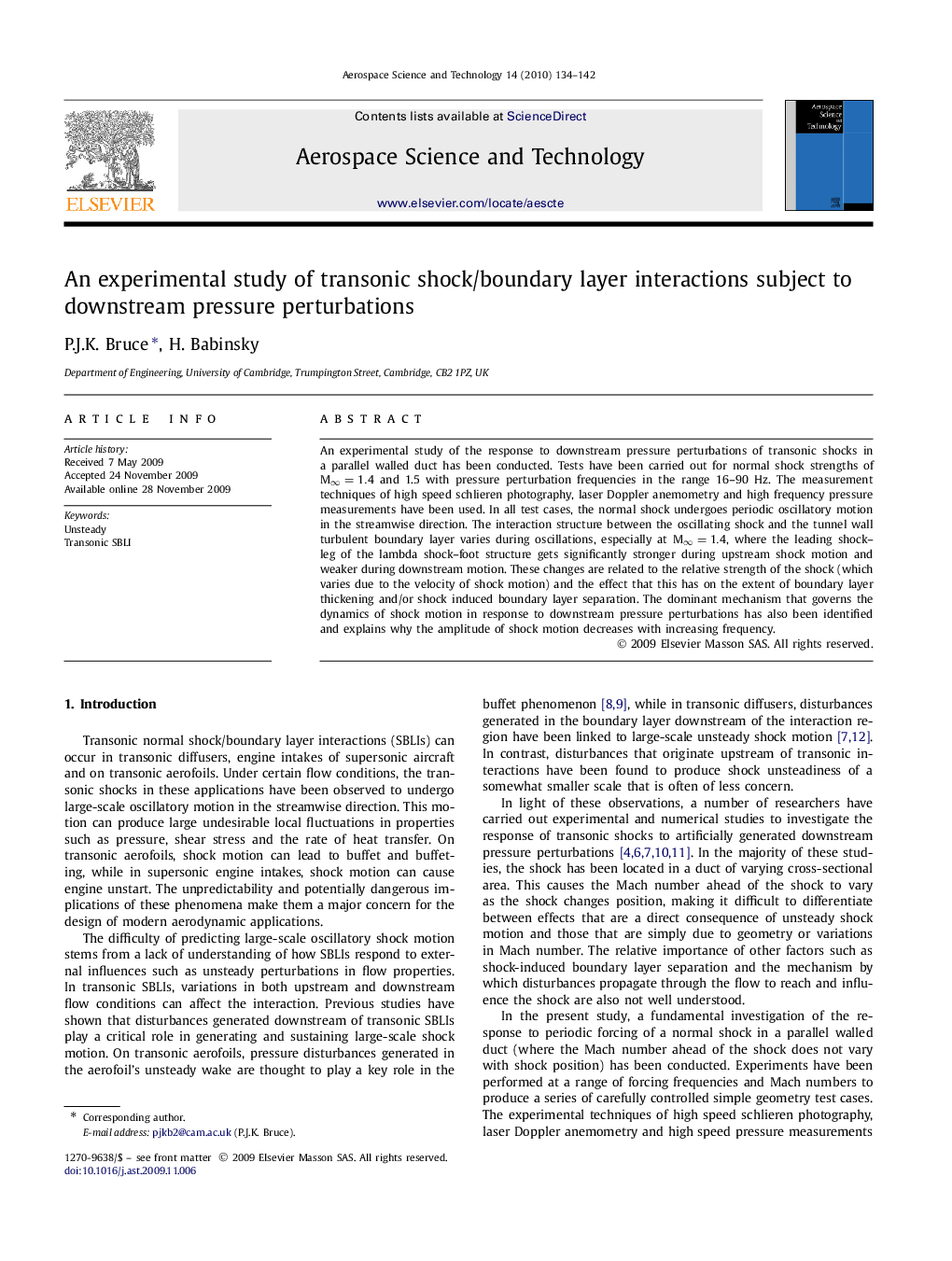| Article ID | Journal | Published Year | Pages | File Type |
|---|---|---|---|---|
| 1718736 | Aerospace Science and Technology | 2010 | 9 Pages |
An experimental study of the response to downstream pressure perturbations of transonic shocks in a parallel walled duct has been conducted. Tests have been carried out for normal shock strengths of M∞=1.4M∞=1.4 and 1.5 with pressure perturbation frequencies in the range 16–90 Hz. The measurement techniques of high speed schlieren photography, laser Doppler anemometry and high frequency pressure measurements have been used. In all test cases, the normal shock undergoes periodic oscillatory motion in the streamwise direction. The interaction structure between the oscillating shock and the tunnel wall turbulent boundary layer varies during oscillations, especially at M∞=1.4M∞=1.4, where the leading shock–leg of the lambda shock–foot structure gets significantly stronger during upstream shock motion and weaker during downstream motion. These changes are related to the relative strength of the shock (which varies due to the velocity of shock motion) and the effect that this has on the extent of boundary layer thickening and/or shock induced boundary layer separation. The dominant mechanism that governs the dynamics of shock motion in response to downstream pressure perturbations has also been identified and explains why the amplitude of shock motion decreases with increasing frequency.
